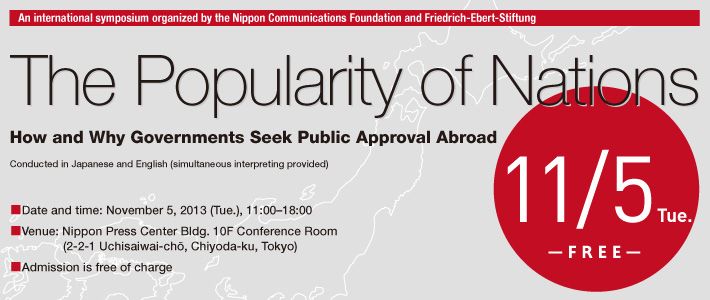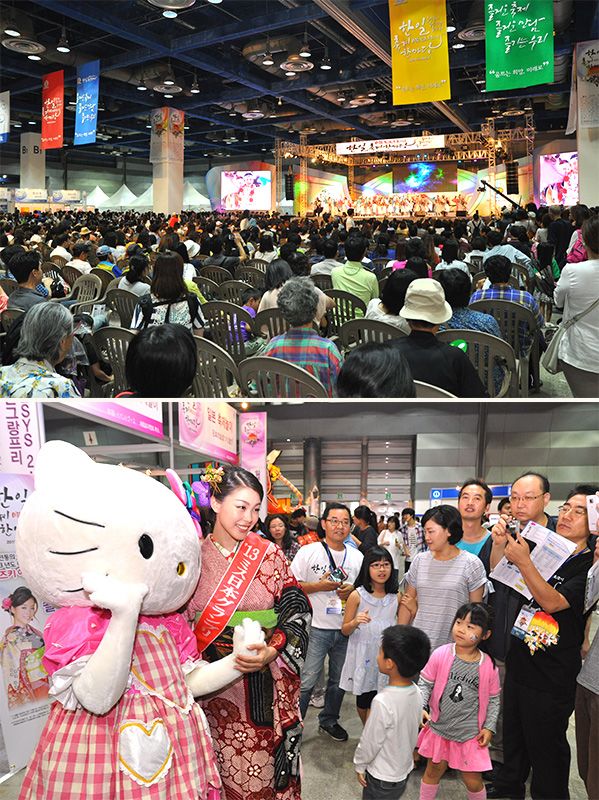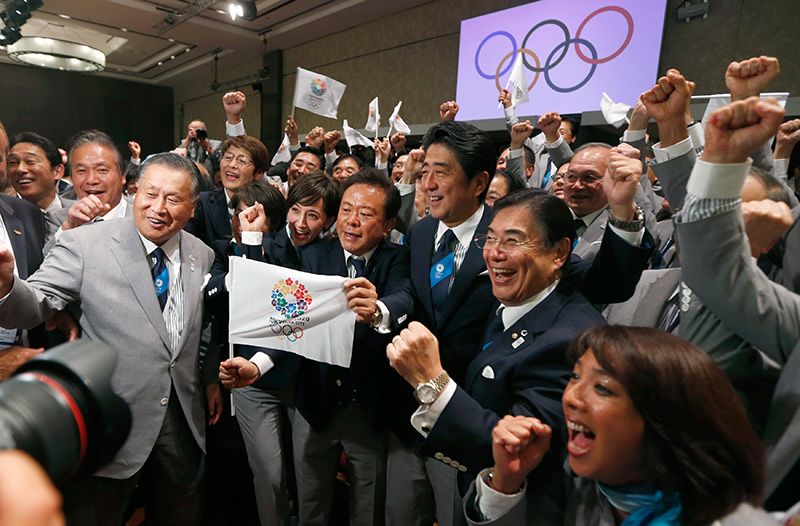
The Age of Public Diplomacy
Politics Culture- English
- 日本語
- 简体字
- 繁體字
- Français
- Español
- العربية
- Русский
Why Public Diplomacy?
Interest in public diplomacy has increased dramatically in recent years. This is a result of the changing environment within which international relations take place. Higher barriers to the use of military power and growing interdependence within the global economy have constricted states’ ability to exercise hard power as they might wish.
At the same time, nations have learned the importance of winning hearts and minds in international relations—influencing public opinion in other countries and increasing their allies as part of the process of establishing rules and a shared approach to common issues and developing internationally accepted norms for state behavior. The result is a growing awareness of the importance of soft power. Public diplomacy is attracting more attention than ever as a means to that end.
There are four classic strands to public diplomacy. These are: (a) promoting awareness of government policy, (b) international broadcasting, (c) exchange-based diplomacy (person-to-person exchange and intellectual dialogue), and (d) cultural diplomacy (language education and cultural/artistic events). As a general rule, (a) and (b) are one-directional and consist of transmitting information quickly across a wide area. Methods (c) and (d), by contrast, are bi-directional, and are designed to promote exchanges of information within a more limited area, with the aim of slowly building understanding and trust.
Today, as the center of global growth shifts to the Asia-Pacific, we face a growing number of challenges relating to national security (in the broad sense of the term). In addition to nuclear weapons limitations/non-proliferation and the struggle against terrorism, these issues include peace-building, human rights, natural disasters, public health, the environment, energy, technical cooperation, and poverty alleviation. Japan also faces the problem of tensions with China and South Korea over territorial rights and differing interpretations of historical issues.
How much can we realistically expect from public diplomacy?
What kind of public diplomacy does Japan need at this time? There are several points we should reconsider before rushing into proposing policies based on previous experience and intuition.
(1) How effective is public diplomacy?
There is no denying that the threat of military intervention by the United States was at least one of the reasons why Syria agreed to give up its chemical weapons. Likewise, economic sanctions by Europe and the United States were instrumental in persuading Iran to abandon its non-cooperative approach and agree to dialogue. In both cases, it was hard power—military and economic might—and not soft power arising from culture, values, or systems, that achieved these results. It cannot be stressed enough that the job of public diplomacy is to play a secondary and supplementary supporting role.
(2) Can public diplomacy overcome the zero sum approach?
 The Korea-Japan Festival held in Seoul in September 2013 (Photos courtesy of Korea-Japan Festival Secretariat)
The Korea-Japan Festival held in Seoul in September 2013 (Photos courtesy of Korea-Japan Festival Secretariat)
In a climate where Japan is finding it impossible to arrange summit meetings with China and South Korea, it is worth noting that the culture ministers from the three countries met in Gwangju, South Korea, as planned on September 28, 2013. Similarly, the Korea-Japan Festival held in Seoul on September 15 attracted more than 40,000 visitors, as well as participation from over 130 companies. More than 700 Korean students helped out as volunteers. This was the most successful festival so far. With soft power competition between nations increasingly based on a zero-sum approach, is it possible that public diplomacy can help to create a positive-sum approach that will be more conducive to international cooperation?
(3) What is the best practice for network-style public diplomacy?
In the current era, it is no longer feasible for the government to single-handedly control and administer information and images. Financially, too, budgetary constraints mean that we are entering a period in which governments will no longer be able to bear the burden of public diplomacy alone. A more diverse range of actors is now contributing to diplomatic relations (in the broad sense of the term), including foundations, think tanks, universities, museums, sports organizations, civil society, and religious organizations. The role of the government is changing: instead of controlling these actors (the hierarchical model) in the future its role will be to support them (the network model).
This is the “new public diplomacy” approach. What are the possibilities for this kind of collaboration? What creative experiments can be made under this approach?
(4) What impact is social media having on public diplomacy?
The spread of social media has made it easy for individuals and groups to publicize their views and activities around the world. Xenophobic statements in particular can easily trigger a negative spiral in this context. Another change is that in cyberspace the dividing line between public diplomacy and intelligence is becoming blurred. What are the possibilities and dangers of social media for public diplomacy?
(5) How to increase understanding and interest?
In 2008, the New York Philharmonic performed a concert in Pyongyang. Of course, such a performance on its own will not contribute directly to solving the problem of North Korea’s nuclear weapons and missile development programs. But it is possible that a member of the future elite of North Korea (or one of his children or siblings) was in the audience and sensed something. Sometimes, changing the way a single person thinks, or simply offering a different perspective, can prove quite significant. Sowing seeds for the future is another important part of public diplomacy’s role. Nevertheless, the fact remains that all countries demand short-term results. What should be done to win hearts and minds in national legislatures and among the public in order to enhance public diplomacy?
Thinking about the state of public diplomacy in Japan
 Members of the successful Tokyo 2020 Olympic delegation celebrate in Buenos Aires (Photo courtesy of Reuters/Aflo)
Members of the successful Tokyo 2020 Olympic delegation celebrate in Buenos Aires (Photo courtesy of Reuters/Aflo)
Japan’s most pressing task remains the effort to rebuild after the devastating earthquake and tsunami that hit northeastern Honshu in March 2011. Tokyo has also been confirmed as the host of the 2020 Olympic and Paralympic Games. The conditions at home and abroad have changed dramatically over the 56 years between Tokyo’s two turns as host city. Japan must work to inspire a sense of trust, appeal, and legitimacy in the years to come. What kinds of strategy and creative thinking are called for in the fields of policy awareness, international broadcasting, exchange diplomacy, and cultural diplomacy?
In Japan, there are still very few university courses or human resource training programs in public diplomacy—let alone dedicated research facilities or specialist journals. In that sense, the decision by the Nippon Communications Foundation and Germany’s Friedrich Ebert Foundation to hold an international symposium with the title of “The Popularity of Nations: How and Why Governments Seek Public Approval Abroad” is a welcome and timely move indeed. I am looking forward to the opportunity to share views with my fellow panelists and with members of the audience on the issues facing us in public diplomacy, including the five questions I have raised in this article.
(Originally written in Japanese on October 7, 2013)
public diplomacy international relations International exchange